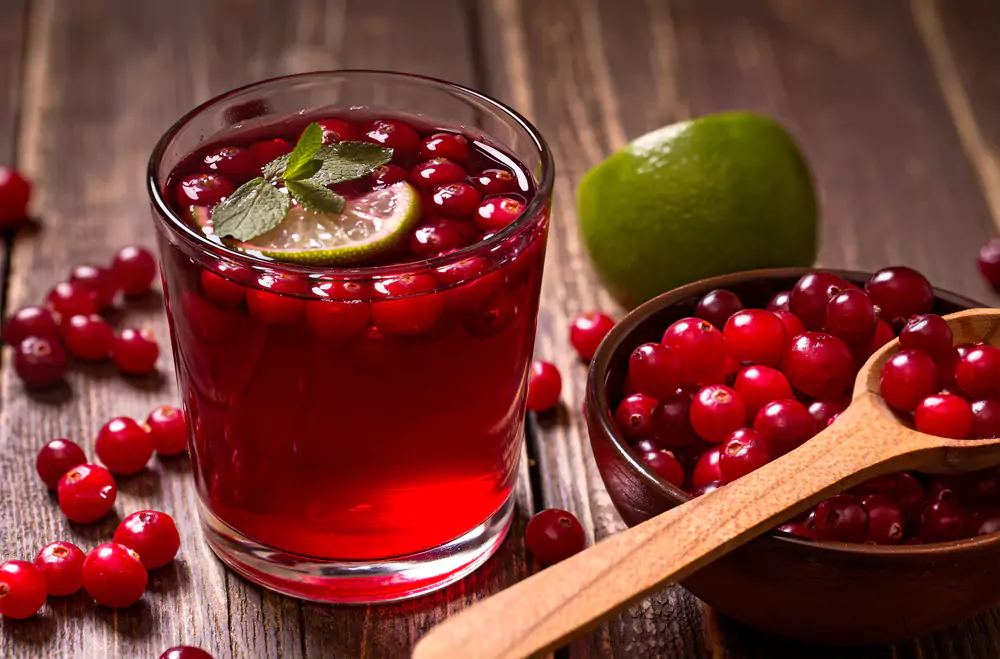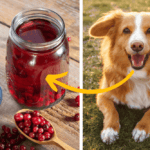Have you ever wondered how long is cranberry juice good after opening the bottle? It’s essential to understand the shelf life of this popular beverage to ensure its freshness and quality.
In this article, we will delve into how long cranberry juice is good after opening, providing valuable insights and guidelines to make informed decisions about consuming this tangy and refreshing drink.
Shelf Life Of Opened Cranberry Juice
The shelf life of opened cranberry juice can vary depending on various factors such as storage conditions, packaging, and preservatives. Generally, once a bottle of cranberry juice is opened, it should be consumed within 7-10 days if stored in the refrigerator at a temperature of 40°F (4°C) or below.
However, it is essential to check the expiration date on the bottle as some brands may have different recommendations. Additionally, if there are any signs of spoilage, such as an off smell, unusual color, or mold growth, it is best to discard the juice. Proper storage and handling are crucial to maintaining the quality and safety of opened cranberry juice.
How Long Can Cranberry Juice Be Consumed After Opening?

Cranberry juice can typically be consumed for up to 7-10 days after opening, as long as it is appropriately stored in the refrigerator. However, it is important to check the expiration date on the bottle and follow any specific instructions provided by the manufacturer.
It is also crucial to look for signs of spoilage, such as a foul odor or unusual texture, before consuming the juice. If any doubt arises regarding the freshness or safety of the cranberry juice, it is advisable to discard it to avoid any potential health risks.
Factors Affecting The Shelf Life Of Cranberry Juice
Like any other food or drink, cranberry juice has a limited shelf life. Several factors can affect the shelf life of cranberry juice, including:
Processing and pasteurization
The way cranberry juice is processed and pasteurized plays a significant role in determining its shelf life. Proper processing techniques, such as heating the juice to kill bacteria and other microorganisms, can extend its shelf life. Pasteurization helps to eliminate harmful pathogens that could cause spoilage of food borne illnesses.
Packaging
The type of packaging used for cranberry juice can impact its shelf life. Airtight containers, such as bottles or tetra packs, help to prevent oxygen from entering the juice and causing oxidation. Oxygen exposure can lead to the growth of spoilage microorganisms and degradation of the juice’s quality. Additionally, opaque or dark-colored packaging can protect the juice from light exposure, which can also degrade its quality over time.
Additives and preservatives
Some cranberry juices may contain additives and preservatives to enhance their flavor color or extend their shelf life. Common additives include citric acid, ascorbic acid (vitamin C), and natural or artificial sweeteners. Preservatives like potassium sorbate or sodium benzoate inhibit the growth of bacteria, yeasts, and molds that can cause spoilage.
Storage conditions
Proper storage conditions are crucial for maintaining the quality and extending the shelf life of cranberry juice. It is recommended to store cranberry juice in a cool, dry place away from direct sunlight and heat sources. Exposure to high temperatures can accelerate spoilage and affect the taste and color of the juice.
Quality of raw materials
The quality of the cranberries used to make the juice can impact its shelf life. Fresh, ripe cranberries free from mold or other defects will result in a higher quality juice with a longer shelf life. Additionally, the cleanliness and sanitation practices during harvesting and processing can also affect the overall quality and shelf life of the juice.
Signs Of Spoilage In Cranberry Juice

Cranberry juice, like any other food or beverage, can spoil over time. It is important to identify signs of spoilage in cranberry juice to ensure its safety and quality. Here are some common indicators of cranberry juice spoilage:
Appearance
One of the first signs of spoilage in cranberry juice is a change in its appearance. Fresh cranberry juice typically has a vibrant red color. If the juice starts to turn brown or develop a cloudy or murky appearance, it may indicate spoilage.
Odor
Another noticeable sign of spoilage is a foul or off-putting odor. Fresh cranberry juice has a tart and slightly sweet aroma. If the juice emits a sour, fermented, or unpleasant smell, it is likely spoiled.
Texture
Spoiled cranberry juice may also have an altered texture. It may become thicker or slimy due to the growth of bacteria or mold. Any unusual texture should be considered a warning sign.
Taste
The taste of spoiled cranberry juice can be significantly different from fresh juice. It may have a sour or bitter taste, indicating that fermentation or bacterial growth has occurred.
Mold Growth
Visible mold growth on the surface of cranberry juice is a clear sign of spoilage. Mold can appear as fuzzy patches or spots and should never be consumed.
Proper Storage Methods For Cranberry Juice

Proper storage methods for cranberry juice are essential to maintain its quality, flavor, and nutritional value. Here are some guidelines to ensure the optimal storage conditions for cranberry juice:
Refrigeration
Cranberry juice should be stored in the refrigerator at a temperature between 32°F (0°C) and 40°F (4°C). This helps to slow down the growth of bacteria and other microorganisms that can cause spoilage. It is important to note that cranberry juice should be refrigerated before and after opening the container.
Sealed Containers
To preserve the freshness and prevent contamination, cranberry juice should be stored in tightly sealed containers. Glass bottles or food-grade plastic containers with airtight lids are recommended. Ensure that the container is clean and free from any residue or odors that could affect the taste of the juice.
Avoid Exposure to Light
Cranberry juice should be stored in a dark or opaque container to protect it from light exposure. Light can degrade the quality of the juice over time, leading to nutrient loss and changes in flavor. If the original packaging is transparent, consider transferring the juice to an opaque container or storing it in a dark cupboard.
Avoid Temperature Fluctuations
It is essential to avoid exposing cranberry juice to frequent temperature changes. Fluctuations in temperature can accelerate spoilage and affect the overall quality of the juice. Keep the refrigerator temperature consistent, and avoid placing the juice near heat sources such as stoves or direct sunlight.
Use-by Date
Pay attention to the use-by date on the packaging of cranberry juice. Consuming expired juice can pose health risks and may not taste as fresh. Always prioritize consuming cranberry juice within its recommended shelf life for optimal quality.
Role Of Preservatives In Extending The Shelf Life Of Cranberry Juice
Preservatives play a crucial role in extending the shelf life of cranberry juice by inhibiting the growth of microorganisms and preventing spoilage. Cranberry juice is susceptible to microbial contamination due to its high water content and nutrient-rich composition, making it an ideal environment for bacteria, yeast, and mold to thrive.
Preservatives such as benzoic acid, sorbic acid, and sodium benzoate are commonly used in cranberry juice to inhibit the growth of these microorganisms. These preservatives work by disrupting the metabolic processes of microorganisms or inhibiting their reproduction, thereby preventing spoilage and maintaining the quality and safety of the juice for a more extended period. Additionally, preservatives also help to preserve the color, flavor, and nutritional value of cranberry juice, ensuring that consumers can enjoy a high-quality product even after an extended period of time.
Tips For Prolonging The Shelf Life Of Cranberry Juice
To ensure that cranberry juice stays fresh and maintains its quality for a longer period, it is crucial to follow specific tips for prolonging its shelf life. Here are some effective strategies to help extend the shelf life of cranberry juice:
- Store cranberry juice in a cool and dark place, away from direct sunlight and heat sources.
- Keep the cranberry juice container tightly sealed to prevent air and moisture entering.
- Refrigerate cranberry juice after opening to slow down the growth of bacteria and maintain its freshness.
- Avoid cross-contamination by using clean utensils and pouring the juice into a clean glass instead of drinking directly from the container.
- Check the expiration date on the cranberry juice bottle and consume it before it.
- If you notice any changes in color, odor, or taste, discard the cranberry juice, as it may have gone bad.
- Consider freezing cranberry juice if you want to extend its shelf life. Pour the juice into an airtight container, leaving some space for expansion, and freeze it for up to six months.
Health Risks Associated With Consuming Expired Cranberry Juice
Expired cranberry juice can pose several health risks due to the potential growth of harmful bacteria and the degradation of essential nutrients. Here are three main health risks associated with consuming expired cranberry juice:
Bacterial Contamination
Expired cranberry juice may become a breeding ground for bacteria, especially if improperly stored or exposed to unsanitary conditions. Bacteria such as E. coli, Salmonella, or Staphylococcus aureus can multiply in expired juice, leading to foodborne illnesses. These bacteria can cause symptoms like nausea, vomiting, diarrhea, abdominal pain, and, in severe cases, even life-threatening complications.
Nutrient Degradation
Over time, the nutritional content of cranberry juice can degrade, especially when it is past its expiration date. Vitamins and antioxidants present in the juice may lose their potency, reducing the potential health benefits associated with consuming fresh cranberry juice. The degradation of nutrients can result in diminished nutritional value and may not provide the same level of support for immune function and urinary tract health.
Mold Growth
If cranberry juice is consumed after its expiration date, there is a risk of mold growth. Mold spores can contaminate the juice during production or enter through improper storage conditions. Drinking mold-contaminated cranberry juice can lead to allergic reactions or respiratory issues in individuals sensitive to mold. In some cases, certain molds may produce mycotoxins that can cause adverse health effects when ingested.
Conclusion
In conclusion, cranberry juice is generally safe for up to 7-10 days after opening, as long as it is stored properly in the refrigerator. However, it is essential to note that the taste and quality of the juice may deteriorate over time. It is recommended to check for any signs of spoilage, such as an off smell or appearance, before consuming. Additionally, it is advisable to follow the manufacturer’s guidelines and expiration dates for the specific brand of cranberry juice. Proper storage and handling are crucial in maintaining the freshness and safety of the juice.
FAQ
How Long Is Ocean Spray Cranberry Juice Good For After Opening?
Ocean Spray Cranberry Juice is typically good for 7-10 days after opening when stored in the refrigerator. However, it is always recommended to check the expiration date on the bottle for more accurate information.
Does Refrigerated Cranberry Juice Go Bad?
Yes, refrigerated cranberry juice can go bad. Like any perishable food item, cranberry juice can spoil if not stored properly or if it exceeds its expiration date.
How Long Is Cran Apple Juice Good For After Opening?
Cranapple juice is typically good for about 7-10 days after opening if stored properly in the refrigerator.
How Long Does Unopened Cranberry Juice Last In Fridge?
Unopened cranberry juice can last in the fridge for up to 9 months. However, it is vital to check the expiration date on the packaging to ensure its freshness and safety.
Does Cranberry Juice Cocktail Need To Be Refrigerated?
No, a cranberry juice cocktail does not need to be refrigerated before opening. However, it is recommended to cool the juice after opening to maintain its freshness and prevent spoilage.






